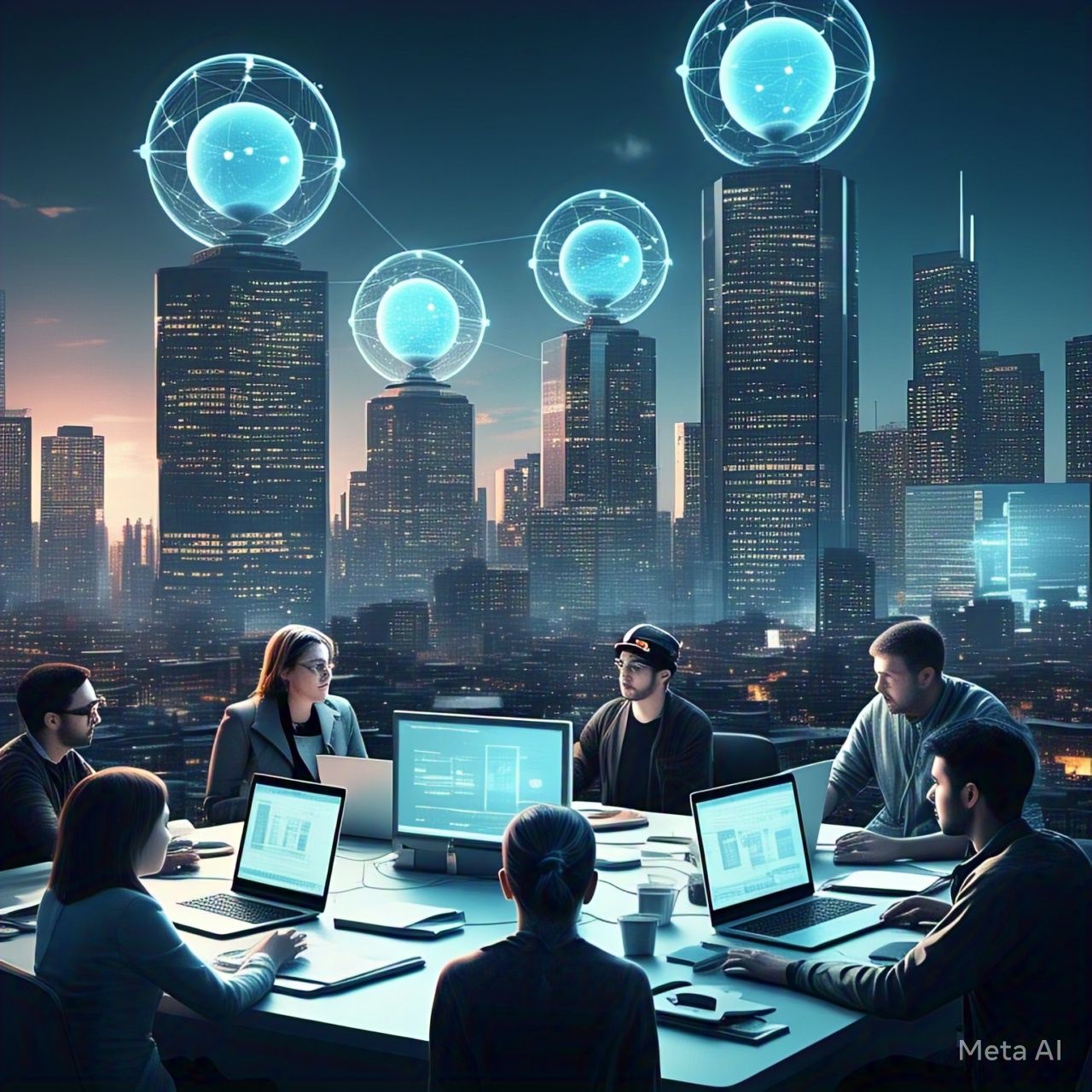Table of Contents
- Introduction
- What is Bio-Inspired Computing?
- The Science Behind Brain-Like AI Processors
- How Bio-Inspired AI Mimics the Human Brain
- Advantages of Bio-Inspired AI Processors
- Real-World Applications of Brain-Like AI
- Challenges and Limitations
- The Future of Bio-Inspired Computing
- Ethical Considerations
- Conclusion
- FAQs
1. Introduction
Artificial Intelligence (AI) has made remarkable strides in recent years, yet traditional computing architectures remain inefficient when processing complex cognitive tasks. Bio-inspired computing, which seeks to emulate the structure and function of the human brain, is a revolutionary step in AI development. This article explores brain-like AI processors, their scientific principles, advantages, applications, and the ethical challenges they present.
2. What is Bio-Inspired Computing?
Bio-inspired computing, also known as neuromorphic computing, refers to the design of AI processors modeled after biological neural networks. Unlike conventional CPUs and GPUs, these processors operate on parallel, event-driven architectures, resembling the way the human brain processes information.
Key Features of Bio-Inspired Computing
| Feature | Traditional Processors | Bio-Inspired AI Processors |
|---|---|---|
| Processing Style | Sequential | Parallel, real-time |
| Energy Consumption | High | Low |
| Learning Approach | Pre-programmed | Adaptive, self-learning |
| Data Processing | Batch-based | Continuous, real-time |
3. The Science Behind Brain-Like AI Processors
Bio-inspired AI processors utilize spiking neural networks (SNNs) to simulate the electrical impulses in biological neurons. Unlike traditional deep learning models, SNNs rely on real-time data processing and adaptive learning mechanisms.
Key Technologies Used:
- Memristors: Store and process data simultaneously, reducing latency.
- Analog Computing: Mimics brain-like signal transmission more efficiently.
- Neuromorphic Circuits: Replicate synaptic activity, enabling dynamic learning.
4. How Bio-Inspired AI Mimics the Human Brain
4.1 Spiking Neural Networks (SNNs)
Unlike traditional artificial neural networks (ANNs), SNNs operate using discrete spikes, allowing for efficient and precise data processing.
4.2 Synaptic Plasticity
Brain-like processors adapt their neural connections over time, enhancing learning efficiency and decision-making.
4.3 Energy-Efficient Computation
Since neurons fire only when necessary, these processors consume far less power than traditional computing architectures.
5. Advantages of Bio-Inspired AI Processors
Bio-inspired processors provide significant benefits compared to conventional chips.
5.1 Energy Efficiency
They use significantly less power, making them ideal for edge computing and mobile devices.
5.2 Real-Time Adaptation
These processors adjust dynamically to changing inputs, improving learning and decision-making.
5.3 Enhanced Pattern Recognition
Their architecture excels at recognizing complex patterns, improving AI’s ability to process visual and auditory data.
6. Real-World Applications of Brain-Like AI
6.1 Healthcare and Medical AI
- Early disease detection through pattern recognition.
- Neural prosthetics powered by brain-like AI.
6.2 Robotics and Autonomous Systems
- AI-driven robots with adaptive learning capabilities.
- Self-driving cars with faster reaction times.
6.3 Smart Devices and IoT
- AI-powered smart assistants that learn from human interaction.
- Efficient home automation with adaptive processing.
6.4 Security and Financial AI
- Fraud detection using real-time anomaly detection.
- Cybersecurity defenses that predict and counter threats.
7. Challenges and Limitations
Despite their promise, bio-inspired AI processors face obstacles:
7.1 Complexity of Design
Developing neuromorphic chips requires advanced fabrication and software integration.
7.2 Scalability Issues
Brain-like AI struggles to scale to larger, more complex computing tasks.
7.3 Ethical and Security Concerns
As AI systems become more autonomous, ensuring transparency, fairness, and security is critical.
8. The Future of Bio-Inspired Computing
8.1 AI-Human Collaboration
Bio-inspired AI could enhance human cognitive abilities through brain-machine interfaces.
8.2 Quantum and Neuromorphic Synergy
The combination of quantum computing and neuromorphic AI may unlock unprecedented computational power.
8.3 Global Adoption in AI Research
Leading tech firms and research institutions are investing heavily in developing bio-inspired AI chips.
9. Ethical Considerations
9.1 AI Consciousness and Autonomy
If AI mimics the brain, does it have the potential for self-awareness?
9.2 Job Displacement
Bio-inspired AI could replace human jobs, raising concerns about workforce adaptation.
9.3 Bias and Fairness in AI
AI systems must be designed to avoid bias and ensure fair decision-making.
10. Conclusion
Bio-inspired computing represents the next leap in AI efficiency, adaptability, and intelligence. By mimicking the brain, these processors hold the potential to revolutionize industries from healthcare to robotics and security. As the technology matures, balancing its benefits with ethical considerations will be essential. The future of AI may not just be inspired by the brain—it may think like one.
11. FAQs
1. How do bio-inspired AI processors differ from traditional CPUs?
Bio-inspired AI processors operate in parallel, use less power, and adapt dynamically, unlike traditional CPUs that process data sequentially.
2. Can bio-inspired AI surpass human intelligence?
While these processors improve AI efficiency, true human-like intelligence is still a long way off.
3. What industries will benefit most from bio-inspired computing?
Healthcare, robotics, finance, and IoT will see significant advancements due to bio-inspired AI.
4. Are bio-inspired AI processors more expensive to develop?
Yes, their design and fabrication are more complex, but costs are expected to decrease with mass adoption.
5. Could bio-inspired AI become conscious?
This remains a philosophical and scientific debate, but current technology is far from achieving true consciousness.




